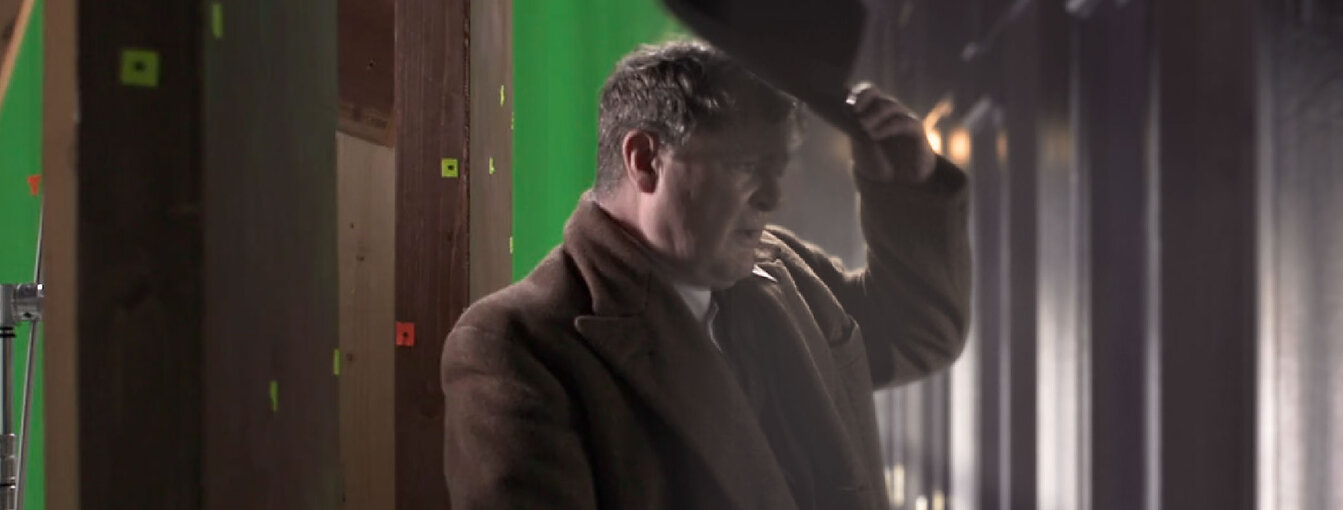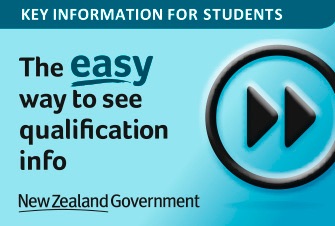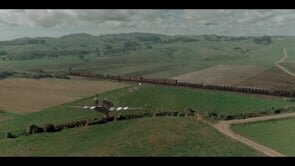What is the Graduate Diploma of Creative Technologies - 3D Animation & VFX?
Take the next step into your career in the Visual Effects industry.
Imagine living in a country which is home to the studio that made the Lord of the Rings, and not studying how to make VFX for films. Explosions, environments and strange creatures are integral to a great blockbuster, which is where you, dear animator, will be able to steal the show. Our industry-experienced faculty will help you develop your skills on an immersive level where you will master modelling, rendering, lighting, and technical direction.
In 2025 we are once again ranked by Animation Career review as the #1 Animation College in New Zealand. Check out some of internationally recognised short films, animated by our students that have snatched professional
Course Outline & Timetable
Our Graduate Diploma of Creative Technologies - 3D Animation & VFX has 4 study streams focusing on the major roles in the industry. Focus on your chosen stream through the first half of your course, before coming together to create incredible work for your capstone project.
Course Outline
The Foundation 3D stream builds on your existing skills with an introduction to industry standard tools and workflows for Film and Television animation and VFX.
This stream is available for February, July and September intakes.
| Component Name | Credits | Toggle |
|---|---|---|
|
Traditional Art and Design for 3D and Visual Effects
|
||
|
This component develops students’ ability to create traditional art pieces through life drawing and theoretical studies, with a focus on applying art and design principles in the context of 3D production. Tutors guide students in analysing traditional artworks, identifying proportion, form, tonal values, and design theory, and applying these concepts to meet a creative brief. Students progressively refine their skills through a series of assessed life drawing projects, building strong observational abilities and the capacity to solve creative problems using traditional media. By the end of the component, students will have produced a portfolio of traditional artworks that demonstrate effective use of theory, composition, and technical execution.
|
||
|
Foundation 3D
|
||
|
This component introduces students to the basic operation of Maya and the complete 3D production pipeline. Tutors demonstrate key techniques in modelling, texturing, animation, lighting, rendering, and compositing, with an emphasis on how each stage connects within an industry-standard workflow. Students develop observational skills by analysing reference footage for modelling detail, lighting strategies, and visual effects approaches, then apply this knowledge to their own projects. By the end of the component, students will have produced a short 3D sequence demonstrating an understanding of core tools, techniques, and production processes.
|
||
|
3D Modelling
|
||
|
Students create more 3D concepts and gain a more advanced understanding of the fundamental theories and principles of composition, colour theory and design theory. Tutors demonstrate more advanced modelling features to enhance the realisation of a creative concept. Tutors begin by demonstrating modelling of simple hard-surface assets that gradually progress to complex organic modelling. Students reproduce the assets from these demonstrations, and use these skills to solve another creative person’s vision. This enhances the students existing visual investigation skills and knowledge and develops their problem solving capability.
|
||
|
Photography
|
||
|
Digital Art II This component introduces students to the principles and practices of 3D compositing and colour grading. Students learn to operate industry-standard tools such as NUKE to integrate rendered 3D assets with camera effects, refine image quality, and create cohesive final shots. Tutors demonstrate compositing workflows, render layer management, and digital image fundamentals, guiding students through problem-solving and decision-making in a time-constrained production environment. By the end of the component, students will have produced composited sequences that demonstrate technical proficiency, strong design judgement, and the ability to justify creative and technical decisions.
|
||
|
Special Topic (Minor Project)
|
||
|
This component is project-based with students opting to initiate either a self-directed Specialist Investigation for those wishing to deepen understanding in an area of special interest to them, or an Interdisciplinary Project for those wishing to broaden their knowledge of 3D Animation as a discipline. Students are required to develop a project proposal based on an independent investigation to explore, develop and realise in a studio environment.
|
||
|
3D Capstone Project: Practice based Inquiry
|
||
|
Students undertake an independent practice-based inquiry and document a body of work. This final body of work is the culmination of the Graduate Diploma and should also represent the students’ perspective as emerging professional 3D Artists. Lecturers will act as mentors and supervisors, providing advice and feedback, as well as monitoring student progress to ensure processes are followed, milestones are met, and sufficient progress is being made.
|
||
Timetable
In general, you are expected to attend 4 classes per week, with an additional 20 hours of self directed study. Your full timetable will be available after your successful application.
Course Outline
The Technical Direction stream builds on your existing skills, teaching you industry standard 3D techniques and workflows for Film and Television (foundation knowledge of the 3D application Maya is a prerequisite for this elective stream).
This stream is available for February, July and September intakes.
| Component Name | Credits | Toggle |
|---|---|---|
|
Modelling
|
||
|
Students learn how to use advanced digital sculpting tools to create accurate and artistic 3D forms. We will cover retopologizing workflows, UV layout and unwrapping techniques, generation of displacement maps, and rendering displacement with PBR render engines
|
||
|
Lighting/ Rendering
|
||
|
This component is designed to develop student’s abilities in lighting, shading, and rendering. The overarching objective is to learn light and shade objectives with consideration to the psychological effects. These effects with be used to drive narrative and believability. Students will engage in both theory of lighting and technical considerations within computer graphics. We will look closely at the properties of many surfaces and disassemble their characteristics for creation purposes. Finally, we will breakdown what a renderer is doing under the hood and build upon prior knowledge to allow lighting, shading and rendering regardless of the render engine used.
|
||
|
Surfacing
|
||
|
Students will learn the fundamentals of a Physically Based Shading workflow, as well as how to use advanced surfacing packages to achieve accurate and artistic material properties. We will cover workflows with different software, including Maya, Mari, Photoshop, Zbrush and others.
|
||
|
3D Scripting
|
||
|
Tutors present a collection of improvements and timesaving strategies for production pipelines using scripting technologies. Students replicate these improvements. They think critically to develop, test and revise scripting solutions to solve progressively complex problems.
|
||
|
Pre-production
|
||
|
The theories and concepts needed for creating storyboards are introduced. Tutors then introduce story structures and other concepts to facilitate the construction of an effective narrative. They demonstrate with examples of storyboards for simple stories. Students produce stories to create individualized storyboards for a production. Tutors also demonstrate the construction of a previs (the previsualisation of a project), from a simple storyboard using Maya. Students learn to create a simple previs from a predefined storyboard, and once they have mastered this, will create one from their own storyboard.
|
||
|
Special Topic (Minor Project)
|
||
|
This component is project-based with students opting to initiate either a self-directed Specialist Investigation for those wishing to deepen understanding in an area of special interest to them, or an Interdisciplinary Project for those wishing to broaden their knowledge of 3D Animation as a discipline. Students are required to develop a project proposal based on an independent investigation to explore, develop and realise in a studio environment.
|
||
|
3D Capstone Project: Practice based Inquiry
|
||
|
Students undertake an independent practice-based inquiry and document a body of work. This final body of work is the culmination of the Graduate Diploma and should also represent the students’ perspective as emerging professional 3D Artists. Lecturers will act as mentors and supervisors, providing advice and feedback, as well as monitoring student progress to ensure processes are followed, milestones are met, and sufficient progress is being made.
|
||
Timetable
In general, you are expected to attend 4 classes per week, with an additional 20 hours of self directed study. Your full timetable will be available after your successful application.
Course Outline
The Animation stream build on your existing skills as a 3D artist with industry standard character animation techniques and workflows for Film and Television (foundation knowledge of the 3D application Maya is a prerequisite for this elective stream).
This stream is ONLY available for our February intake.
| Component Name | Credits | Toggle |
|---|---|---|
|
Animation Workflow and Principles
|
||
|
Students build on animation skills learned earlier in the foundational and digital art components. Further principles and theories of animation are taught using reference footage focusing on good pose design, principles of animation and weight shifting.. Tutors facilitate critiques of the footage from different perspectives, identifying its strengths and weaknesses. Students learn to use industry standard tools to animate objects using the principles and theories of animation. Once students become more comfortable navigating these tools they begin to animate simple movements from a collection of reference footage.
|
||
|
Acting and Expressions
|
||
|
Students will learn how to accurately create facial expressions based on muscles in the face. You will also learn lip sync, gesturing, and basic acting and emotion. You will use all these elements together to create a believable animation of a whole character.
|
||
|
3D Scripting
|
||
|
Tutors present a collection of improvements and timesaving strategies for production pipelines using scripting technologies. Students replicate these improvements. They think critically to develop, test and revise scripting solutions to solve progressively complex problems.
|
||
|
Pre-production
|
||
|
The theories and concepts needed for creating storyboards are introduced. Tutors then introduce story structures and other concepts to facilitate the construction of an effective narrative. They demonstrate with examples of storyboards for simple stories. Students produce stories to create individualized storyboards for a production. Tutors also demonstrate the construction of a previs (the previsualisation of a project), from a simple storyboard using Maya. Students learn to create a simple previs from a predefined storyboard, and once they have mastered this, will create one from their own storyboard.
|
||
|
Special Topic (Minor Project)
|
||
|
This component is project-based with students opting to initiate either a self-directed Specialist Investigation for those wishing to deepen understanding in an area of special interest to them, or an Interdisciplinary Project for those wishing to broaden their knowledge of 3D Animation as a discipline. Students are required to develop a project proposal based on an independent investigation to explore, develop and realise in a studio environment.
|
||
|
3D Capstone Project: Practice based Inquiry
|
||
|
Students undertake an independent practice-based inquiry and document a body of work. This final body of work is the culmination of the Graduate Diploma and should also represent the students’ perspective as emerging professional 3D Artists. Lecturers will act as mentors and supervisors, providing advice and feedback, as well as monitoring student progress to ensure processes are followed, milestones are met, and sufficient progress is being made.
|
||
Timetable
In general, you are expected to attend 4 classes per week, with an additional 20 hours of self directed study. Your full timetable will be available after your successful application.
Course Outline
The Visual Effects Compositing stream build on your existing skills as a VFX artist with industry standard compositing techniques and workflows for Film and Television.
This stream is ONLY available for our February intake.
| Component Name | Credits | Toggle |
|---|---|---|
|
2D Compositing
|
||
|
Students determine and test compositing techniques to manipulate 2D image sequences into one seamless shot. Tutors explain theories and concepts of cinematography for tracking 2D. Students experiment with various tools and techniques to solve common rig-removal and plate clean-up problems. They also address problems of colour-space manipulation and camera stabilisation. Students shoot footage and then produce a collection of roto-masks for augmentation of key objects into a scene.
|
||
|
3D Compositing
|
||
|
Students investigate the historical issues associated with lighting and colour grading to inform, enhance, and inspire compositing strategies and solutions. Tutors introduce the theories, tools and techniques associated with CGI integration. Students match real environmental effects through the use of compositing techniques, and are expected to draw on a wide variety of physical theories and concepts to assist them. They will seamlessly integrate 2D and 3D assets into photographic live-action plates by matching the camera movement used while shooting the scene, to ensure the visual narrative is retained.
|
||
|
3D Scripting
|
||
|
Tutors present a collection of improvements and timesaving strategies for production pipelines using scripting technologies. Students replicate these improvements. They think critically to develop, test and revise scripting solutions to solve progressively complex problems.
|
||
|
Pre-production
|
||
|
The theories and concepts needed for creating storyboards are introduced. Tutors then introduce story structures and other concepts to facilitate the construction of an effective narrative. They demonstrate with examples of storyboards for simple stories. Students produce stories to create individualized storyboards for a production. Tutors also demonstrate the construction of a previs (the previsualisation of a project), from a simple storyboard using Maya. Students learn to create a simple previs from a predefined storyboard, and once they have mastered this, will create one from their own storyboard.
|
||
|
Special Topic (Minor Project)
|
||
|
This component is project-based with students opting to initiate either a self-directed Specialist Investigation for those wishing to deepen understanding in an area of special interest to them, or an Interdisciplinary Project for those wishing to broaden their knowledge of 3D Animation as a discipline. Students are required to develop a project proposal based on an independent investigation to explore, develop and realise in a studio environment.
|
||
|
3D Capstone Project: Practice based Inquiry
|
||
|
Students undertake an independent practice-based inquiry and document a body of work. This final body of work is the culmination of the Graduate Diploma and should also represent the students’ perspective as emerging professional 3D Artists. Lecturers will act as mentors and supervisors, providing advice and feedback, as well as monitoring student progress to ensure processes are followed, milestones are met, and sufficient progress is being made.
|
||
Timetable
In general, you are expected to attend 4 classes per week, with an additional 20 hours of self directed study. Your full timetable will be available after your successful application.
Careers & Industry
The Graduate Diploma of Creative Technologies provides you with everything you need to level up your skills, and to bring a more diverse skillset to your existing career, or the tools to switch to a new one. Our graduates have gone onto have successfull careers in industry, freelance, or even growing their existing businesses.
VFX Compositor
3D Animator
Technical Director
Course Requirements
Qualifications you'll need for this course
Open to domestic and international applicants with a degree qualification, or accumulated professional / educational experience relevant to the creative technologies domain.
All applicants need to provide evidence to support the level of skill required for a self-directed investigation.
If you are applying for the GDCT after completing a Bachelors Degree you will need to provide:
- Your portfolio;
- Your letter of intent;
- Your transcripts from your Bachelors qualification;
- Your CV/Resume;
If you are applying on the basis of accumulated professional or educational experience, you will need to provide evidence of four years or more of accumulated professional or educational experience, to include:
- Your portfolio;
- Your letter of intent;
- Your CV/Resume;
- Two reference letters from previous employer/s; and
- You may also want to provide your transcripts from any prior tertiary qualifications if you completed these in the past 10 years.
Please note, quotas may apply to some programmes. Where demand exceeds the number of available places, applicants who meet entry requirements will be admitted on a first-come-first-served basis.
As an international student, you'll need to prove you have sufficient English language skills in order to complete this course. We'll be looking for Academic IELTS overall score of 6.0 (minimum) with no band less than 5.5, or equivalent test result.
We accept a range of internationally recognised English Language proficiency test. Find out more on the NZQA website or download the NZQA list HERE.
How to prepare your portfolio
If you are applying for Graduate Studies you'll already have a body of work and a portfolio. When applying, we'll expect your portfolio to be to a professional standard, clearly indicate your areas of interest, and who you are as an artist. We would also like to see your show-reel if applicable, for areas of interest such as visual effects and motion graphics.
Portfolio type - Advanced Portfolio
File Format - PDF, Website URL or JPGs
For more information about how to build your portfolio, head over to our portfolio tips page.
Before you begin your study with us, you will need to have a suitable device that has the functionality to run the programmes required for your course.
Click the link below to find course-specific requirements and recommendations, along with links to more information about hardware specifications. We have prepared these recommendations to help our students equip for flexible, blended learning.






